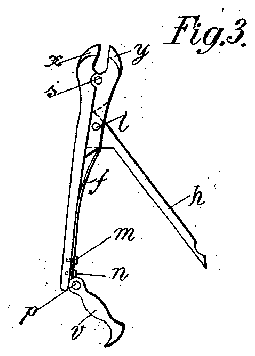
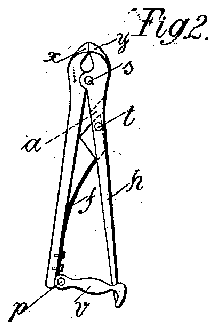
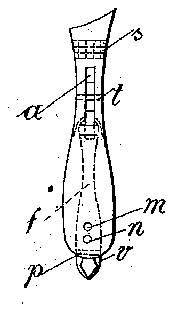
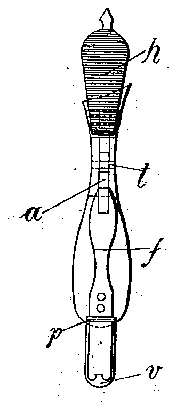
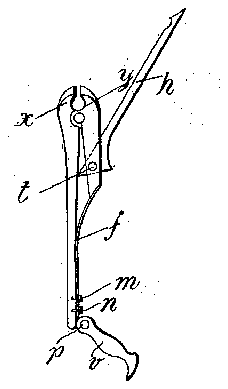
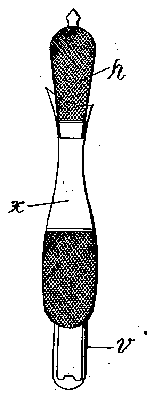
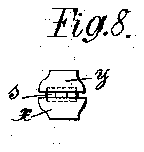
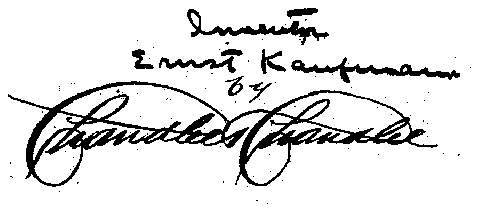
- 1i
- 72lever
Description
No. 730,024. v PATE'NTED' JUNE .2, 1 903.
. E 'KAUFMANN. I x n CUTTER AND IMPLEMENT FOR THE NAILS.
' Arruouxon rum) NOV.14, 19oz.
I0 MODEL.
as straight cutting-faces.
UNITED STATES iatented. June 2, 1903.
PATENT OFFICE.
CUTTERAND IMPLEMENT FOR THE NAILS.
SPECIFICATION forming part of LettersPatent No. 730,024, dated June 2, 1903.
Application filed November 14, 1902. $eria11lo. 131,329. (No model.) 7
T0 on whom it may concern.-
Be it known that I, ERNST KAUFMANN, a subis constructed after the manner of small" tweezers or nippers, but which by reason of the shape of one leg allows of a gentle out being made without requiring any considerable exertion of power. The said leg is also made on its inner side as a nail-file or nail-cleaning implement, so that the improved implement is suitable for the complete care of the nails.
One method of carrying this invention into effect is illustrated, by way of example, in the accompanying drawings, in which Figure 1 is a view in front elevation of the implement in the closed condition. Fig. 2 is a view in side elevation thereof. Fig. 3-is a similar view showing the cutter in an open position; and Figs. 4 and 6 are views in front elevation outside and inside, respectively, showing the file or cleaning-toolgturned up. Fig. 5 is a view in side elevation of Figs. at and 6,and Figs. 7 and 8 are views from above of the cutting-jaws in the closed and opened posi tions, respectively. 1
Throughout the views like parts are marked with like letters of reference.
In the construction shown the nail-cutter is provided with inclined and conically-bent cut-y ting-faces w and y; but this particular. construction is not a distinguishing feature of the invention, because they may also be formed The small jaws which carry the cutting-faces 0c and y are extended in the form of levers or arms and are pivoted together by means of ahinge s. The leg of the jaw y is shorter than the opposite leg and has pivoted to it'in a slot a, Fig. 1, the lever h. This lever has its upper part pivoted on the pin t, formed with awedgeshaped nose, while its lower part is formed internally as a file and .its free end as a nail scraper or cleaner. The free end of the leg belonging to the jaw'y is acted on by a forked spring f, which is fixed to the leg of the jaw 00 by means of small screws m and n, the said spring being so arranged as to have a tendency to continually move the jaws away from each other.
The pivoted lever h in moving from the open position, Fig. 3, into the closed position, Fig. 2, will cause the lower ends of the legs belonging to ac and y to be moved away from each other by reason of. the higher back of the nose of the lever h coming in between them, so that the jaws are thereby moved toward each other and the spring f is placed under further tension. When the nail-cutter is in the closed state, it is secured by means of a loop or catch '0, which is movably connected at p to the .leg of the jaw w and which is slipped over a groove in the lower end of the lever 72.
Thus to use the nail-cutter the catch '0 is opened out of the position shown in Fig. 2 in be now situated undermost, then-the cutter will be again in its open position, but so as to cause. the spring f to look, as it were, the lever h in .that position, Fig. 5. The lever h is thus locked in position to serve as a file,
and ihmaythen be used as such, as also with its free .end, that is now situated uppermost, asa nail cleaning or scraping device.
The forked shape of the spring f is neces saryin'order to, allow of suitably mounting the lever h. This-rmproved implement for the nails, notwithstanding its extremely effective action, fis of such small dimensions that it can be easilyhcarriedin the waistcoat pocket or thfe like. 1 c
What I claim ,'*an desireto secure by Letters Patent of'th tedastates, is I 1. A device of the classidescribed comprising pivotally-connectedf legs'having cuttingjaws at one end, one of saidleg's being shorter than the other, saidshor'if'er leg being bifur cated, a lever pivoted between the resultant spaced portions of the shorter leg, said lever having a cam disposed for engagement with the opposite leg and movable to engage portions at opposite sides of its point of greatest eccentricity and a spring constructed and arranged to hold the legs yieldably against the action of the cam, said lever being provided with nail-treating devices.
2. A device of the class described comprising pivotally-connected legs having cuttingjaws at one end, one of said legs being shorter than the other and bifurcated to form spaced portions, the ends of said spaced portions being beveled, a lever pivoted between the spaced portions and having a cam disposed